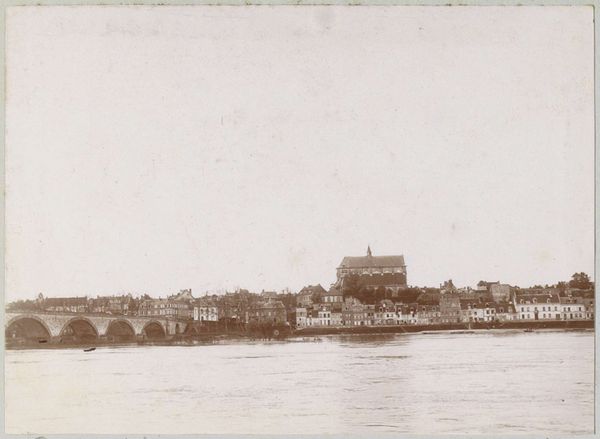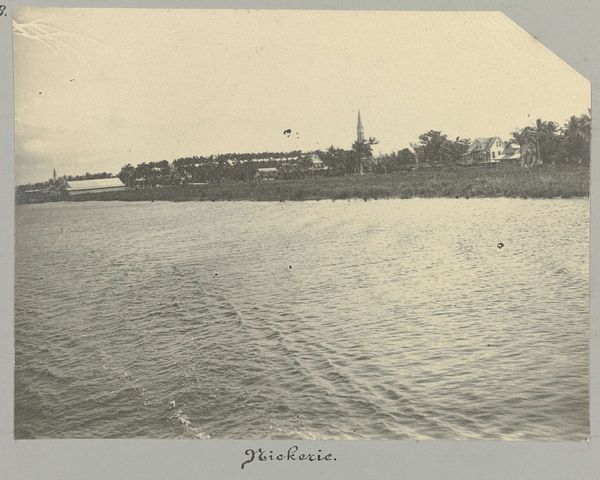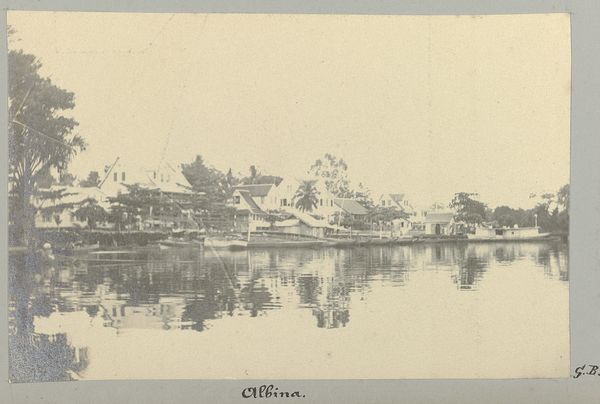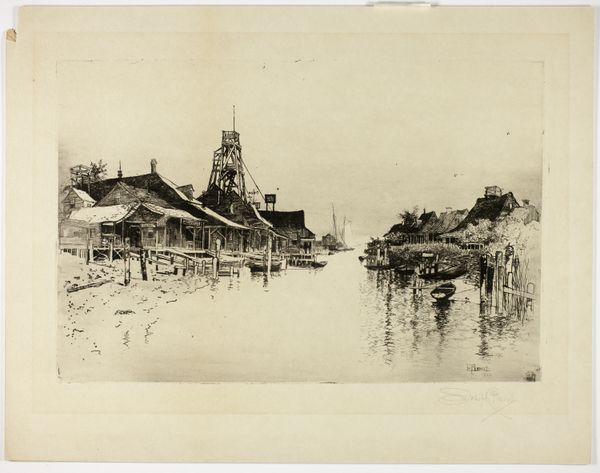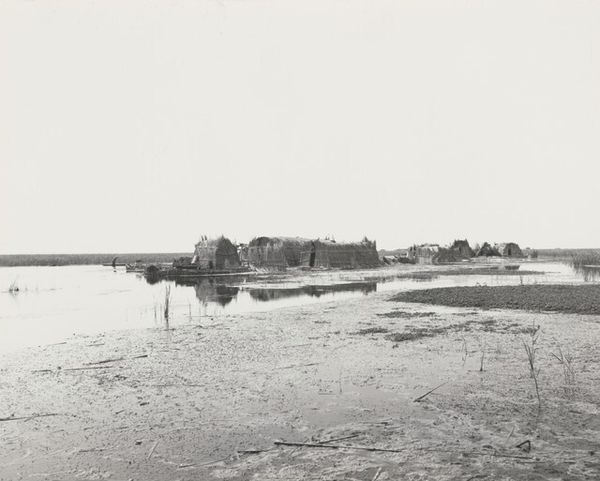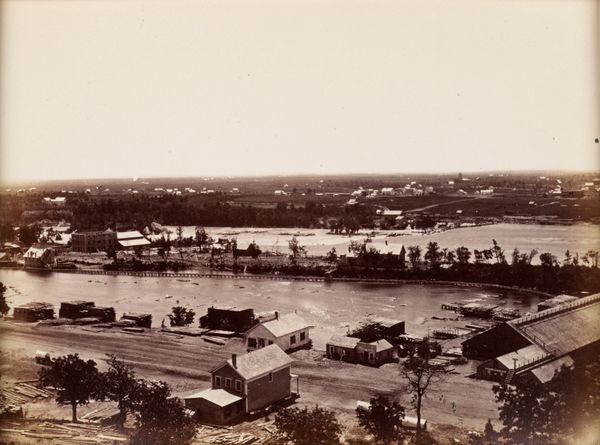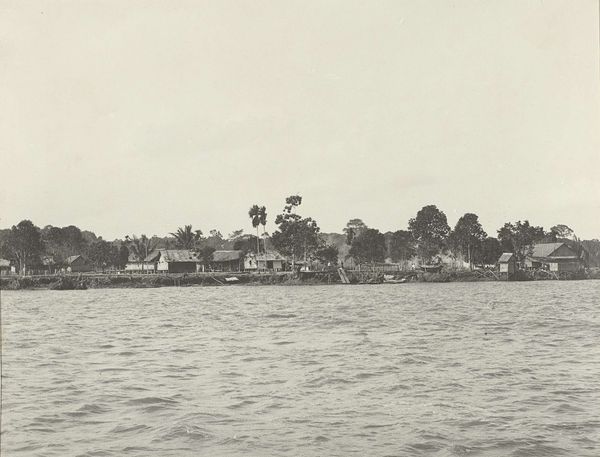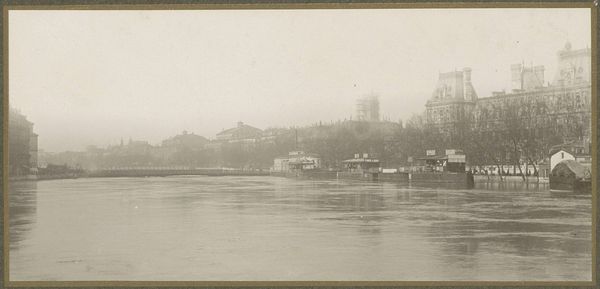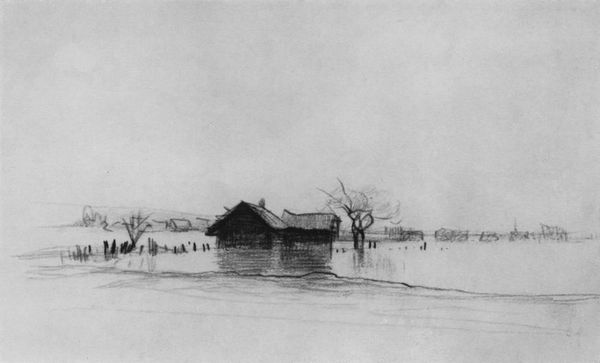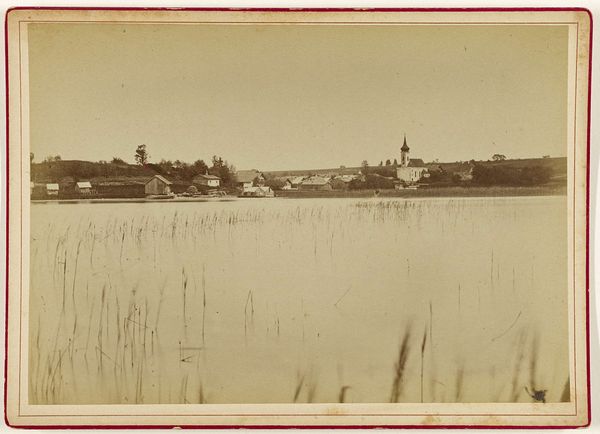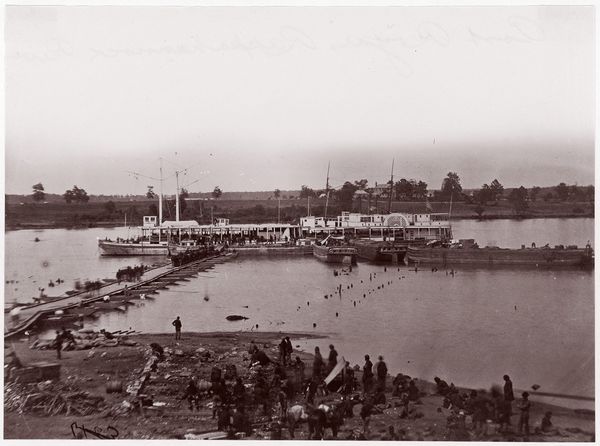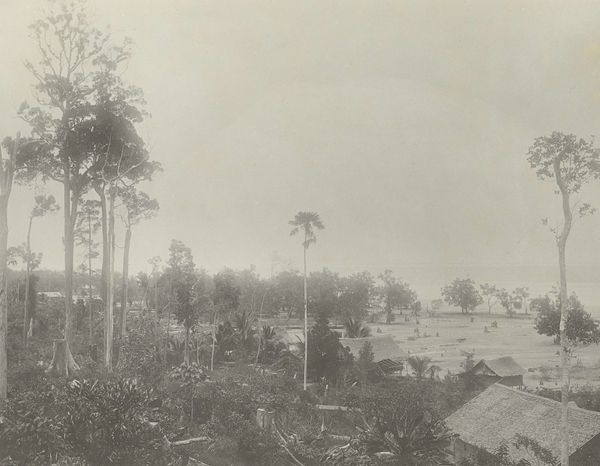
Two Sketches of Venice: Sartoza, Torcello and S. Andrea; Murano 1883
Dimensions: 8 11/16 x 12 1/8 in. (22.1 x 30.8 cm)
Copyright: Public Domain
Curator: This etching by Andrew Fisher Bunner, dating from 1883, presents us with "Two Sketches of Venice: Sartoza, Torcello and S. Andrea; Murano". Editor: The delicacy of the lines is striking; there's a whisper of Venice in the almost ghostly reflections on the water. The composition feels very balanced, the dark, densely marked areas anchoring the airy lightness above. Curator: Bunner was indeed quite skilled. These architectural studies of Venetian scenes exemplify the etching revival's interest in capturing atmosphere and detail. Note how printmaking in this period allowed for a wider dissemination of Venetian imagery, shaping perceptions of the city as a site of both beauty and decay. It contributed significantly to a burgeoning tourism industry, transforming Venice into a sort of spectacle. Editor: The hatching and cross-hatching techniques, it's marvelous how they delineate depth. He masterfully uses the absence of ink too, the stark white of the paper creating shimmering effects on the lagoon. It is also clever that Bunner decided to divide this sheet horizontally for two distinct viewpoints, the vantage points allow the viewer a layered experience in what this architecture means from far and away versus upfront and direct. Curator: That compositional decision allows him to capture the variety and complexity of Venetian architecture within a single print. We often find such approaches were driven by a desire to catalogue and categorize. The creation and consumption of images became entwined with political power, offering some an opportunity for social or even scholarly advancement in these fields. Editor: Absolutely, there is this sense of careful observation that transcends mere documentation. Look, the surface of the paper isn't completely smooth either, with it slightly coarse it further highlights the marks from the etching stylus or needle, giving it tactility despite the representational scene of open water. It's all about texture and the modulation of light to evoke this famous setting. Curator: Considering the date, one could easily place this etching in conversation with contemporary debates around preservation versus modernization in Venice. Did artworks of this kind promote genuine appreciation or exploit a fragile cultural heritage? It becomes an urgent question. Editor: Interesting. Ultimately it remains a strong display of technique in printmaking, though—a very captivating, light-filled slice of 19th-century Venice! Curator: Indeed. Bunner invites us to consider the interplay of place, image, and the very human act of seeing.
Comments
No comments
Be the first to comment and join the conversation on the ultimate creative platform.
